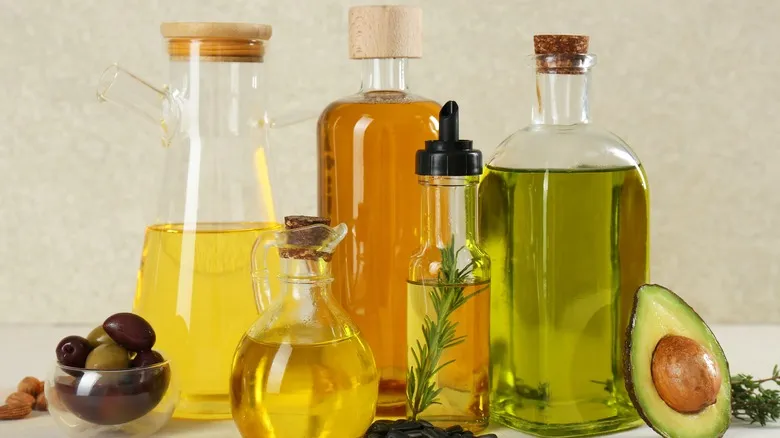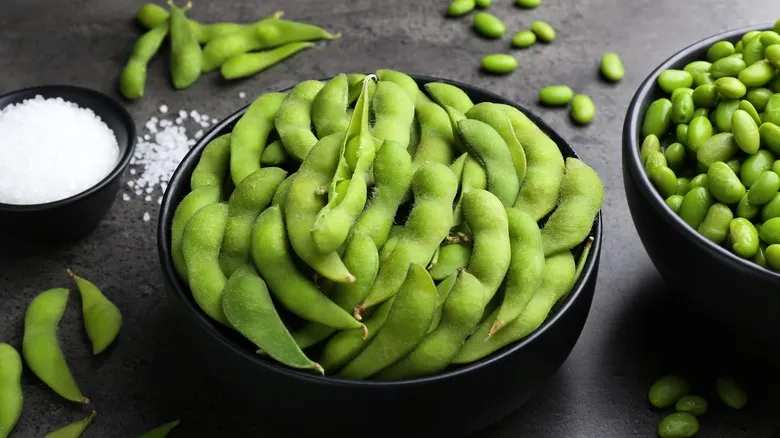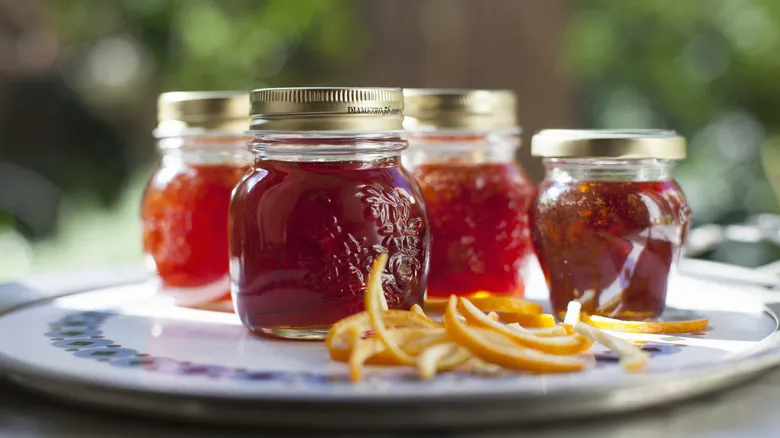Why you should sear your tuna steaks in oil

When cooking with oil, it's important to heat your pan until the oil begins to shimmer. This creates a nice sear on the surface of your food while preventing the oil from penetrating too deeply. However, if you heat the oil further, you'll reach its smoke point. In simple terms, the smoke point is the temperature at which the oil stops shimmering and starts to produce smoke. Once an oil reaches this point, it begins to break down, resulting in compounds that can impart a burnt flavor to your food. While this may not be a major issue in a complex dish, it can ruin a simple, standout item like a tuna steak.
While butter can enhance the flavor of a tuna steak, it has one of the lowest smoke points at just 350 degrees Fahrenheit. For searing a tuna steak, you should opt for an oil with a smoke point in the range of 425 to 450 degrees Fahrenheit. This means avoiding oils with lower smoke points, such as extra virgin olive oil (325-400 degrees Fahrenheit). Instead, consider using canola oil (400-475 degrees Fahrenheit), peanut or sunflower oil (both at 450 degrees Fahrenheit), or even avocado oil (480-520 degrees Fahrenheit). If you're unsure, check out our guide on when to use vegetable oil versus olive oil.
How to still achieve buttery seared tuna

Butter enthusiasts, don’t despair—there’s still hope! While you might not want to sear your tuna in scorched butter, that doesn’t mean you can’t enjoy the delightful combination of butter and tuna at the end. The trick is to avoid having the butter in the pan with the tuna during the searing process. You can still infuse all that delicious flavor by using a separate pan.
Before cooking your tuna, melt some butter (along with garlic and any herbs you prefer) in a different pan, allowing it to infuse while you prepare the rest. You can then drizzle that butter over your tuna during the final minute of cooking or right after you turn off the heat. Alternatively, serve the butter as a dipping sauce or pour it over the tuna just before serving. This way, you can enjoy the rich, buttery flavor alongside the fish without the risk of it tasting burnt.
Recommended

Are Soybeans And Edamame The Same Thing?

Jam Vs Jelly: Here's The Difference Between The Two

The Secret To Perfectly Cooked Bacon Is An Ingredient Everyone Has

How To Store Your Homemade Ice Cream The Right Way
Next up

